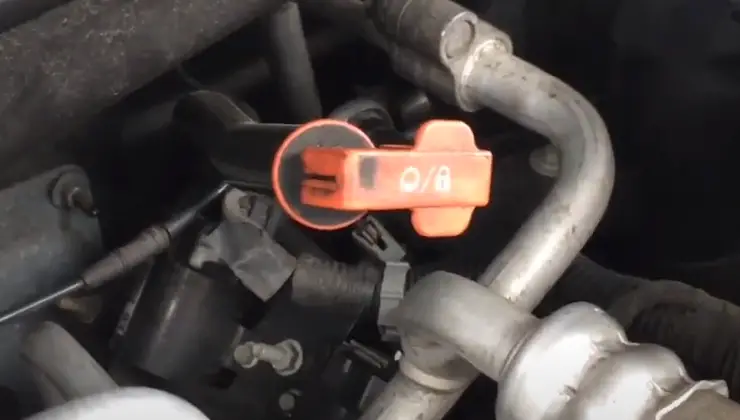If you are an automobile owner or a mechanic, you may have come across codes P1133 and P1153 on your vehicle’s onboard diagnostics (OBD) system. These codes relate to the oxygen sensor (O2 sensor) in your vehicle, which is an essential component in controlling the fuel mixture and emissions of your car. In this article, we will explore how to fix code P1133 and P1153, including their causes, symptoms, and solutions.
Contents
What are codes P1133 and P1153?
Codes P1133 and P1153 are diagnostic trouble codes (DTCs) that are related to the oxygen sensor in your vehicle. The oxygen sensor is responsible for measuring the oxygen content in the exhaust gases and sending this information to the engine control module (ECM). The ECM uses this information to adjust the fuel mixture to optimize engine performance and reduce emissions.
What causes codes P1133 and P1153?
There are several causes of codes P1133 and P1153, including:
Failed oxygen sensor: The most common cause of these codes is a failed oxygen sensor. The oxygen sensor may fail due to age, exposure to heat, or contamination.
Wiring issues: The wiring that connects the oxygen sensor to the ECM may become damaged or disconnected, leading to these codes.
Vacuum leaks: Vacuum leaks can cause codes P1133 and P1153 by allowing unmetered air into the engine, causing the ECM to misinterpret the oxygen sensor data.
What are the symptoms of codes P1133 and P1153?
The symptoms of codes P1133 and P1153 may include:
Check engine light: The most common symptom of these codes is a check engine light on your dashboard.
Poor fuel economy: If the fuel mixture is not adjusted correctly, you may experience poor fuel economy.
Rough idle: The engine may run rough or stall at idle if the fuel mixture is not correct.
How to fix code p1133 and p1153
Follow the step-by-step guide to fix the codes P1133 and P1153
Step 1: Verify the codes
The first step in fixing codes P1133 and P1153 is to verify that they are present. You can do this using an OBD scanner or by taking your vehicle to a mechanic who has the necessary equipment. Once you have confirmed the codes, you can proceed to the next step.
Step 2: Inspect the oxygen sensor
The next step is to inspect the oxygen sensor for damage or contamination. If the sensor appears damaged or dirty, it may need to be replaced. You should also inspect the wiring that connects the sensor to the ECM and ensure that it is in good condition.
Step 3: Check for vacuum leaks
Vacuum leaks can cause codes P1133 and P1153 by allowing unmetered air into the engine. You can check for vacuum leaks by inspecting the hoses and connections that lead to the intake manifold. If you find any leaks, you should repair or replace the affected parts.
Step 4: Replace the oxygen sensor
If you have inspected the oxygen sensor and the wiring and found no issues, you may need to replace the sensor. You should use a high-quality replacement sensor that is compatible with your vehicle’s make and model. Once you have replaced the sensor, you can clear the codes and test the vehicle to ensure that the problem has been resolved.
Step 5: Reset the ECM
After fixing the issue that caused the codes, you should reset the ECM to clear the codes. You can do this by disconnecting the battery for a few minutes or using an
OBD scanner to clear the codes. Once the codes have been cleared, you should test drive the vehicle to ensure that the issue has been resolved.
Frequently Asked Questions (FAQs)
Q: Can I drive my vehicle with codes P1133 and P1153?
A: It is not recommended to drive your vehicle with these codes as they can lead to poor fuel economy and engine performance. Additionally, the issue that caused the codes may worsen over time, leading to further damage to your vehicle.
Q: Can I fix codes P1133 and P1153 myself?
A: If you have experience with automotive repairs and the necessary tools, you may be able to fix these codes yourself. However, if you are unsure of what is causing the issue, it is recommended to take your vehicle to a qualified mechanic for diagnosis and repair.
Q: How much does it cost to fix codes P1133 and P1153?
A: The cost of fixing these codes can vary depending on the cause of the issue and the make and model of your vehicle. The cost may include the price of the oxygen sensor, wiring repairs, and labor costs.
Q: Can a bad catalytic converter cause codes P1133 and P1153?
A: A bad catalytic converter can cause codes P0420 and P0430, which are related to the catalytic converter. However, a bad catalytic converter is not likely to cause codes P1133 and P1153.
Q: How often should I replace my oxygen sensor?
A: The oxygen sensor should be replaced according to the manufacturer’s recommended maintenance schedule. Generally, the oxygen sensor should be replaced every 60,000 to 100,000 miles.
Q: Can a faulty ECM cause code P1133 and P1153?
A: A faulty ECM is not likely to cause these codes. However, a faulty ECM can cause other issues with your vehicle’s performance and should be diagnosed and repaired by a qualified mechanic.
Conclusion
Codes P1133 and P1153 can be frustrating issues for vehicle owners and mechanics. However, with the proper diagnosis and repairs, these codes can be fixed, and your vehicle can run smoothly and efficiently. If you are unsure of what is causing these codes, it is recommended to take your vehicle to a qualified mechanic for diagnosis and repair. Remember to always follow the manufacturer’s recommended maintenance schedule to keep your vehicle running at its best.
